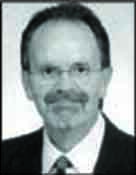 | William L. Park, OD, FAAO is in private practice in Wichita, KS. He works exclusively with patients referred for low vision evaluation, low vision rehabilitation and neurological vision loss. He is a past Director of Low Vision Services, Lions Research & Rehabilitation Center, Wilmer Eye Institute-Johns Hopkins University. Dr. Park can be reached at William L. Park, OD, LLC, www.parklowvision.com, 610 N. Main, Suite 201, Wichita, KS 67203, (316) 440-1690 or drpark@parklowvision.com. |
Vision
2009-05-01 11:45:00
Bioptic helping those to drive
Question: How can bioptic telescopes help me drive with vision loss?
Answer: The ability to drive is the ultimate form of independence in today’s society. However, it is important to remember that driving is a privilege, not a right.
First and foremost, it is important to ensure that visually impaired individuals have obtained maximal correction for their eyes and that best corrected visual acuity has been achieved. Many issues affect those with vision loss, including: poor depth perception and recognition of low contrast objects, reduced night vision, decreased field of view, slow reaction time, and sensitivity to glare. There are, however, many people who are visually impaired who can drive safely with the use of bioptics.
A bioptic telescope is a miniature telescope mounted in normal distance corrective lenses, usually above a person’s line of sight, and is used to magnify distant objects. However, driving with a bioptic telescope requires significant training in the general use as well as behind-the-wheel driver’s training. Only a low vision optometrist or ophthalmologist should prescribe the bioptic telescope.
While the use of bioptic telescopes for activities of daily living and driving has been around for decades, they are not without controversy. If vision loss is affecting your vision, ask your doctor for a comprehensive low vision evaluation, as you may benefit from a bioptic telescope-mounted lens. An initial two-hour evaluation is performed to see if you are an appropriate candidate. You are then assessed and educated using a bioptic for all activities of daily living, including driving. As a result of this, a referral is sent to an occupational therapist and an orientation and mobility specialist. A week-long loan and home environment assessment with the bioptic is then scheduled with follow up from the low vision team on the success and skillful use during the loan period. Proper use and understanding of the bioptic can assist your ability to see and drive safely. For further information, see published papers concerning the visually impaired driver at www.parklowvision.com.
Kansas Law
In order to obtain a driver’s license in Kansas, the driver must demonstrate a visual acuity of 20/40 in the better eye with or without corrective lenses.
Vision worse than 20/40 in the better eye requires a Department of Motor Vehicles (DMV) vision form filled out by an eye care specialist.
For drivers with less than 20/60 visual acuity, a DMV vision form is required and the driver must demonstrate an ability to operate a vehicle safely and have a safe record for three years. Visual fields of less than 110 degrees (binocular), less than 55 degrees (monocular), require a test drive.
For bioptic users, a vision form is required, accompanied by an annual report and a drive test based on acuity through carrier lenses. A doctor must certify that the applicant is safe enough to attempt the driving test.


